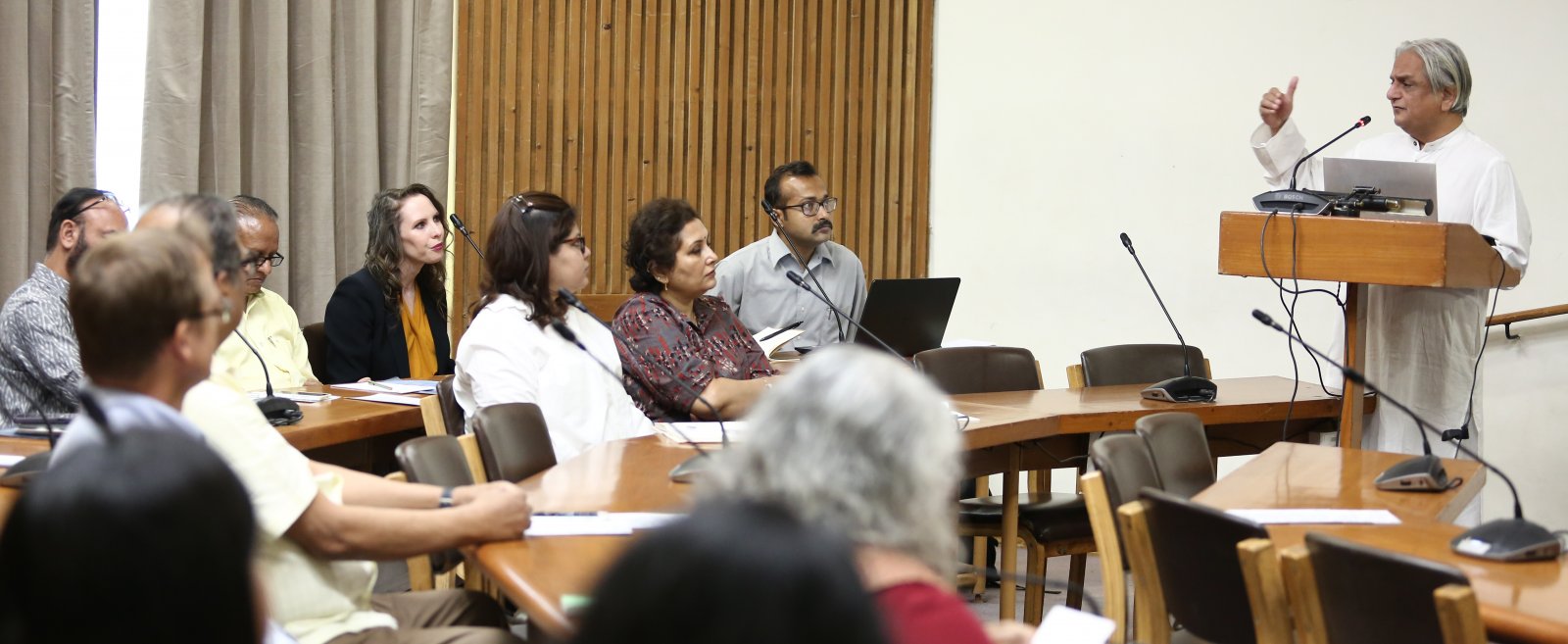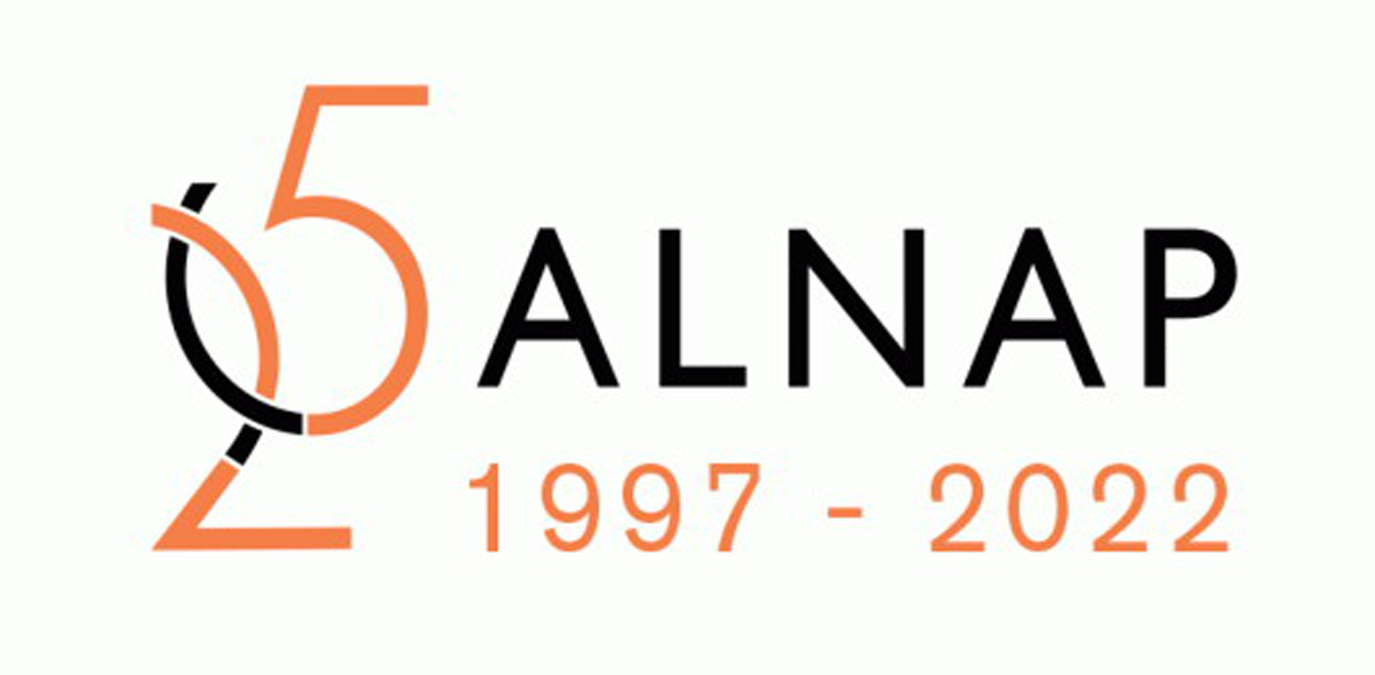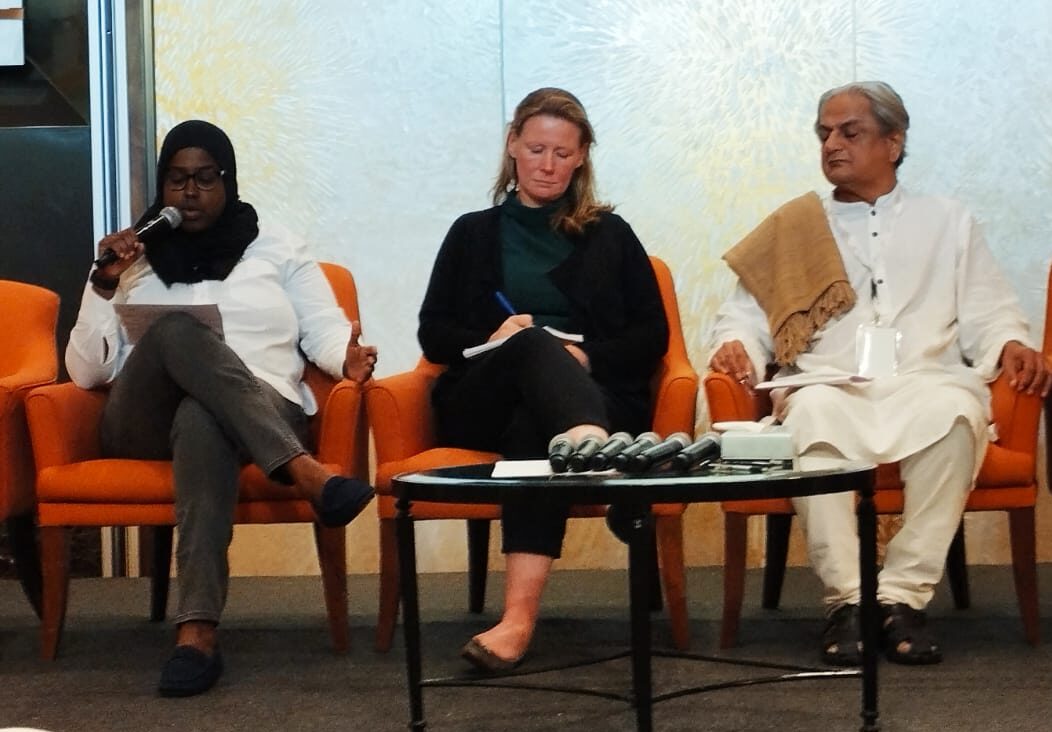AIDMI Director Mihir Bhatt addressing the audience as chair of the launch event for their report Strengthening the Humanitarian System in India and ALNAP’s 2022 State of the Humanitarian System in Delhi. Photo credit: AIDMI
On 24 April 2023 the All India Disaster Mitigation Institute (AIDMI) and ALNAP held a joint event to share the global findings of The State of the Humanitarian System 2022 with the humanitarian community in Delhi and to discuss them in relation to the Indian context. In the afternoon, WFP India presented a new report co-created with AIDMI and Sphere India focused on Strengthening the Humanitarian System in India.
The following day, ALNAP Research Fellow Jen Doherty sat down with ADMI’s Director Mihir Bhatt to reflect on the lively discussions.
The State of the Humanitarian System (SOHS) is a global report that analyses the performance of the humanitarian system by aggregating information from different organisations and crisis-affected countries. How do you see such a report being useful in the Indian context?
This SOHS report helps put the humanitarian system in India into the global context. It helps to show where India is doing well, where it is not doing well, and what it can pick up from the global context to help serve its affected citizens better, faster and more adequately. It’s a significant and timely global report that also helps India as a ‘new’, ‘Southern’ donor to a few countries mentioned in the SOHS, from neighbours such as Bangladesh, Sri Lanka and Nepal to, most recently, Turkey. What can India do to be a better global humanitarian donor? This report will be especially helpful to India when it comes to promoting the Disaster 20 (D-20) group within the G20, of which India is the current president. So the SOHS report is useful to India in the global, national and local contexts.
ALNAP Research Fellow Jen Doherty delivering the keynote presentation of The State of the Humanitarian System 2022 in Delhi. Photo credit: AIDMI
The participants in the event yesterday came from a wide section of India’s humanitarian community, including local and national NGOs, INGOs, CSOs, academics and UN agencies, the private sector, tech firms and others. Based on their discussions, what themes and issues from the global report do you think resonated most with participants?
At least two themes rang true to the participants in Delhi immediately: accountability to affected populations, and locally led initiatives. India is keen to ensure prompt and effective relief that means not only that citizens build back better, but that loss and damage is reduced and recovery is used to transform risk reduction and resilience building capacities at the local level. Any transformation can only be sustainable if it is locally led and accountable to at least the affected populations.
Why do you think those particular issues are important for humanitarian work in India?
Because India is determined to unleash the energy of its citizens, not only to drive progress in their chosen directions and through their own efforts, but also to protect that progress from shocks associated with humanitarian crises – including climate crises such as rising sea levels and high altitude glacier meltdowns. Local leadership to reduce risk and lead recovery is more effective in terms of cost, time and effort. Who better than Ladakh citizens to lead the recovery from a cloud burst or glacier meltdown, as AIDMI found out from its work in the city of Leh with the Local Hill Area Council? Who better than the Kolis of Versova in Mumbai to address the rising sea level, as AIDMI has seen in its work with Mumbai 61 under the TAPESTRY project? Local leadership, especially by affected populations and stakeholders, is paramount in making India’s humanitarian system work better and faster.
ALNAP Research Fellow Jen Doherty (right) in conversation with AIDMI Director Mihir Bhatt (centre) and independent evaluator Ray Kancharla (left). Photo credit: AIDMI
We’re already thinking about creating the sixth edition of the SOHS and the discussions yesterday provided a lot of food for thought. How do you hope the SHS India will evolve in the coming years?
SHS India is already evolving after the Delhi event, where the participants raised the need for SHS India II. AIDMI is busy inviting core groups to plan the product and process, and ALNAP is most welcome to be more directly involved. The current SHS India report will act as a baseline, and any changes – progress or the lack thereof – will be tracked in the next publication. In addition, as the consensus in Delhi suggested, new themes such as women’s access to relief, scoping emerging technologies (such as drones and AI), and examples of long-term impact will be added in the coming years. The next draft will have far more material on civil society organisations and local initiatives such as the Sustainable Environment and Ecological Development Society, Unnati, the Centre for Youth and Social Development, Bal Raksha and UNICEF’s local partners. AIDMI has put the process in motion and suggestions for further focus are coming in: the changing climate, adaptation-related migration, organic agriculture, air and water pollution, green transition shelter, decarbonised logistics, the protection of the maritime infrastructure and jobs, the business continuity of the agriculture sector, anticipatory actions, forests as carbon fixers, the role of rivers and lakes, and a new humanitarian view of high altitude locations in the Himalayas such as Ladakh, Sikkim and Arunachal Pradesh.







